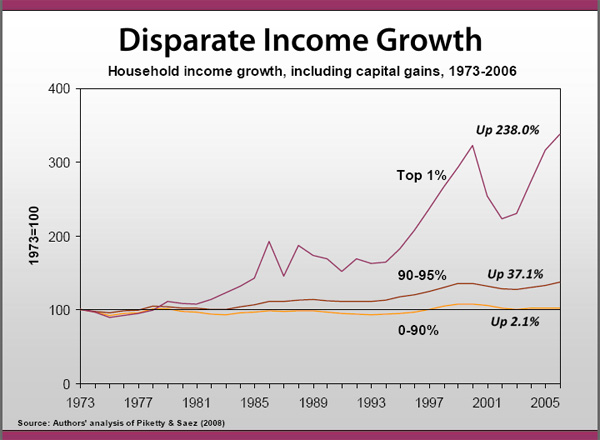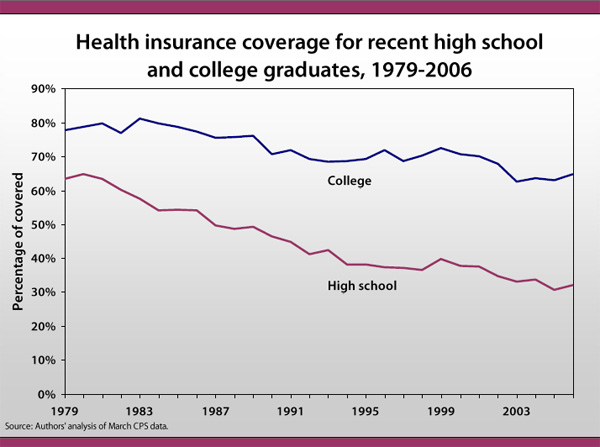As the debate heats up over health care reform, and ways to finance that reform, income patterns of recent years offer some valuable perspective on which groups could best shoulder the cost.
During a recent lecture at Abbaye Neumünsterin in Luxembourg (First Annual Luxembourg Income Study summer lecture) EPI President Lawrence Mishel showed how the typical working family suffered a decline in income this decade, even before the current recession began in late 2007. The exception was the top 1%, whose incomes have risen sharply for several decades. This pattern of income growth — rapid for a select few at a time of more widespread income stagnation — has created a wide and growing gap between the haves and the have-nots. As Mishel showed in his presentation, the top 1% of U.S. earners more than doubled their share of total income between 1979 and 2006, when their income represented 23% of all the earned income in the United States:

What does this have to do with health care? First, it offers valuable context for the current House reform bill, which includes as one of its most contentious provisions, a surcharge on the highest earning households. As EPI economist Josh Bivens noted in a recent analysis, incomes of this group are growing so fast that, if the proposed tax were applied, they still would be able to return to former income levels within a matter of months. In the following income graph, Mishel illustrates just how unbalanced income growth has become:

His presentation makes another crucial point about the connection between good wages and health care. As wages for young workers with high school and college degrees have fallen, so too have their rates of insurance coverage:

It is not just jobs that are being lost. Jobs with benefits such as health insurance are becoming increasingly scarce.
Mishel’s entire presentation, Waging Inequality in America, can be viewed here.
